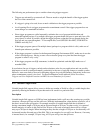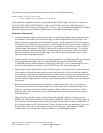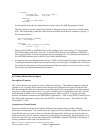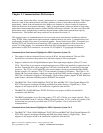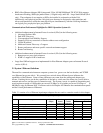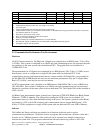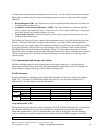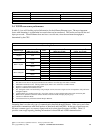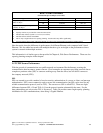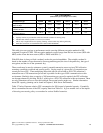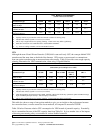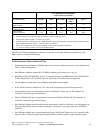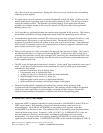
To demonstrate communications performance in various ways, several workload scenarios are analyzed.
Each of these scenarios may be executed with regular nonsecure sockets or with secure SSL using the
GSK API:
1. Request/Response (RR): The client and server send a specified amount of data back and forth over
a connection that remains active.
2. Asymmetric Connect/Request/Response (ACRR): The client establishes a connection with the
server, a single small request (64 bytes) is sent to the server, and a response (8K bytes) is sent by the
server back to the client, and the connection is closed.
3. Large transfer (Stream): The client repetitively sends a given amount of data to the server over a
connection that remains active.
The NetPerf and Netop tools used to measure these benchmarks merely copy and transfer the data from
memory. Therefore, additional consideration must be given to account for other normal application
processing costs (for example, higher CPU utilization and higher response times due to disk access time).
A real user application will have this type of processing as only a percentage of the overall workload.
The IBM Systems Workload Estimator, described in Chapter 23, reflects the performance of real user
applications while averaging the impact of the differences between the various communications protocols.
The real world perspective offered by the Workload Estimator can be valuable for projecting overall
system capacity.
5.3 Communication and Storage observations
With the continued progress in both communication and storage technology, it is possible that the
performance bottleneck shifts. Especially with high bandwidth communication such as 10 Gigabit and
Virtual ethernet, storage technology could become the limiting factor.
DASD Performance
Storage performance is dependent on the configuration and amount of disk units within your partition.
Table 14.1.2.2 in chapter 14. DASD Performance shows this for save and restore operations for 2
different IOA’s. See the chapter for detailed information.
25016582Restore
25016582Save
*SAVF
2757 IOA
1228341Restore
1228341Save
*SAVF
45 Units30 Units15 Units2778 IOA
Number of 35 GB DASD units (Measurement numbers in GB/HR)IOA and operation
Table 5.2 - Copy of Table 14.1.2.2 in chapter 14. DASD Performance
Large data transfer (FTP)
When transferring large amounts of data, for example with FTP, DASD performance plays an important
role. Both the sending and receiving end could limit the communication speed when using high
bandwidth communication. Also in a multi-threading environment, having more then one streaming
session could improve overall communication performance when the DASD throughput is available.
Table 5.3
IBM i 6.1 Performance Capabilities Reference - January/April/October 2008
© Copyright IBM Corp. 2008 Chapter 5 - Communications Performance 67



